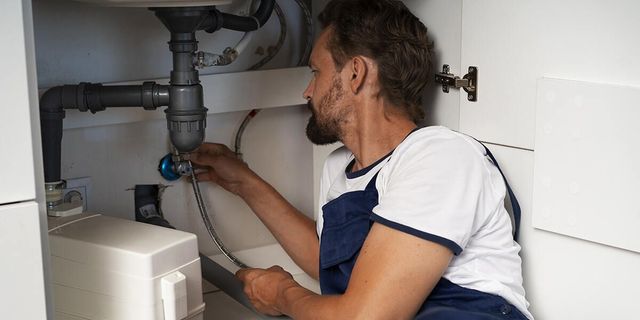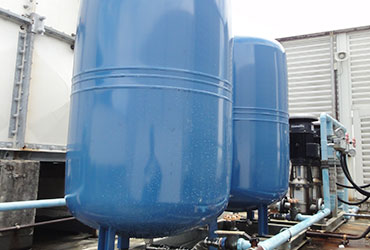How do you actually feel in regards to 9 Reasons for Low Water Pressure in Your House?

Low tide pressure in your home can be a discouraging issue, influencing every little thing from bathing to cleaning dishes. If you're experiencing weak water circulation, there are several feasible causes and solutions to check out. In this guide, we'll go over common factors for low tide pressure and sensible actions to resolve the issue effectively.
Intro to Low Tide Stress
Low water stress occurs when the flow of water from your faucets, showers, and other components is weak than common. This can make day-to-day tasks much more tough and much less efficient. Comprehending the sources of low tide stress is essential to discovering the ideal option.
Common Root Causes Of Low Water Pressure
Faulty Pressure Regulators
Stress regulatory authorities are responsible for maintaining consistent water pressure in your house. If they malfunction, it can cause low tide pressure or uneven circulation throughout your house.
Local Supply Of Water Issues
Often, the problem exists outside your home. Local supply of water concerns, such as main line leaks or upkeep work, can momentarily decrease water stress in your area.
Pipe Obstructions
Over time, pipes can end up being clogged with natural resource, debris, or debris, restricting the flow of water. This is a common issue in older homes with galvanized steel pipes.
Deterioration
Corrosion within pipes can lead to leakages and lowered water pressure. Rust accumulation can restrict water circulation, especially in aging plumbing systems.
Exactly How to Detect Low Water Stress
Inspecting Pipes
Check visible pipes for indicators of leakages, corrosion, or clogs. Focus on any unusual noises, such as banging or rattling pipelines, which can suggest problems within the plumbing system.
Consulting with a Plumber
If you're unable to pinpoint the cause of low tide stress, think about hiring a specialist plumber to carry out a detailed assessment. They can identify underlying concerns and suggest appropriate options.
Inspecting Faucets and Components
Beginning by testing the water stress at different taps and components throughout your home. If the issue is separated to specific areas, it may indicate localized problems.
Do It Yourself Solutions to Fix Low Tide Stress
Flushing Water Heater
Sediment accumulation in the hot water heater can restrict circulation and decrease effectiveness. Flushing the storage tank periodically assists get rid of sediment and maintain optimal performance.
Inspecting Pressure Regulator
Guarantee that the pressure regulator is functioning correctly. Adjusting or replacing the regulatory authority can aid recover appropriate water pressure throughout your home.
Cleansing Aerators and Showerheads
Natural resources can gather in aerators and showerheads, minimizing water circulation. Remove and cleanse these parts consistently to enhance water pressure.
Clearing Clogs in Water Lines
For small obstructions, attempt utilizing a plumbing snake or chemical drainpipe cleaner to clear obstructions in pipelines. Be cautious when making use of chemicals and comply with safety and security guidelines.
When to Call a Professional Plumber
If DIY efforts stop working to resolve the issue or if you presume considerable plumbing troubles, it's finest to seek aid from an accredited plumber. They have the expertise and devices to deal with intricate concerns safely and successfully.
Safety Nets to Keep Water Stress
Setting Up a Stress Booster
Think about mounting a stress booster pump to improve water stress in areas with regularly low flow. This can be particularly beneficial for multi-story homes or homes with high-demand fixtures.
Monitoring Water Use
Bear in mind water usage habits and stay clear of ill-using the plumbing system. Easy changes, such as staggering showers and washing tons, can aid preserve adequate water stress.
Regular Upkeep
Schedule regular maintenance for your plumbing system to prevent problems such as corrosion, leaks, and obstructions. Dealing with small problems early can assist stay clear of more considerable repair work in the future.
Verdict
Handling low tide stress can be irritating, but determining the underlying causes and applying ideal services can bring back ideal circulation throughout your home. Whether it's cleansing aerators, evaluating pipelines, or speaking with a plumber, taking proactive steps can ensure a steady supply of water for your everyday requirements.
9 Solutions to Low Water Pressure
If you have ever struggled to rinse the shampoo out of your hair, washed your hands under a trickle of water, or been forced to wait for your washing machine to complete a cycle, then you have experienced the nuisance of low water pressure. Low water pressure can turn a simple task into a hassle, but once you identify the cause, either the necessary plumbing fix or a water booster pump can drastically improve your water pressure. In this article, you can learn about nine common causes of low water pressure and how to resolve low water pressure in your home.
How do you know if you have low water pressure?
Testing your home’s water with a pressure gauge is the easiest way to find out if you have low water pressure. Pressure gauges are simple and inexpensive, and once installed, will allow you to check your water pressure with a quick glance.
If your water is from a municipal water supply, select an outdoor faucet near where the main water line enters your home. If your water is from a well, select a faucet that is close to the well’s pressure tank. Attach the pressure gauge to the faucet and tighten it. To get an accurate reading, make sure water isn’t being used anywhere else inside or outside the house, and then fully turn the faucet on. Once the faucet is on, you can read the water pressure on the gauge’s dial. Typical home water pressure should be between 40 and 50 psi, so if the dial reads less than 40 psi, you have low water pressure.
Do water booster pumps increase water pressure?
A water booster pump is a centrifugal pump that improves low water pressure and increases water flow. Much like how a fan’s blades create a gust of air, a water booster pump’s rotating impeller draws water in and then pushes it out with increased force. This force raises the water pressure in a system. A water booster pump is installed where the main water line enters your home, so water pressure is improved in every tap and appliance.
What causes low water pressure?
1. Hard water
If you have hard water, scale can accumulate in your pipes, restrict the water flow, and reduce your water pressure. Hard water has a high mineral content, specifically calcium and magnesium, and scale is formed when these mineral salts dissolve.
The solution: When scale buildup is severe enough to restrict water flow and reduce water pressure, the best solution is to replace your pipes. Products like CLR Calcium, Lime, and Rust remover can diminish scale, but as the scale comes off it may clog your pipes, creating another costly plumbing problem. Not to mention, it is never a good idea to put harsh chemicals in the pipes that supply your drinking water. To prevent scale in the future, we recommend installing a water softener.
The main water shut off valve is not open.
If your water pressure has suddenly decreased and you recently had a repair done, make sure the main water shut off valve is fully open. Most plumbing repairs require the water to be shut off, but if the valve is not completely opened afterward, your water pressure will be restricted.
The solution: Locate your main shut off valve, which is installed where the main water line enters your home, and fully open it by turning it counterclockwise.
A municipal water problem
Low water pressure may not have to do with your own plumbing system. Just like your home’s water supply, the municipal water supply is subject to problems that can cause low water pressure, such as leaks and corrosion.
The solution: Call the municipal water supply to report your low water pressure. Your input may alert them to the problem and will ensure your water pressure is restored as quickly as possible.
Faulty pressure regulator
A pressure regulator is a valve that reduces incoming water pressure as water flows into your home from the main service line. High water pressure can damage pipes and plumbing fixtures, so a pressure regulator is installed to protect your home plumbing system. Most are set to 50 pounds per square inch (psi), but if yours is set lower, your water pressure will feel low. If your pressure regulator is set to 50 psi but your pressure still feels low, it may be broken or clogged.
The solution: Adjust your pressure regulator’s setting to 50 psi if it is currently set lower. If your pressure regulator is faulty, ask a plumber to replace it.
A leak
A leak can reduce water flow and water pressure. To determine if you have a leak, turn all the faucets off inside and outside of your home. About an hour later, check your water meter. If it indicates you are using water, you have a leak.
The solution: Enlist the help of a licensed plumber to locate and repair the leak. Once the repairs are complete, your water pressure should return to normal.
https://www.freshwatersystems.com/blogs/blog/what-causes-low-water-pressure-and-how-to-improve-it

We were shown that article on 10 Reasons for Low Water Pressure in Your House through a buddy on another site. If you appreciated our blog post kindly remember to share it. Many thanks for being here. Return soon.
Estimate